Affiliate links on Android Authority may earn us a commission. Learn more.
The Sony Xperia Z4v is everything the Z4/Z3+ should have been
Published onJune 17, 2015
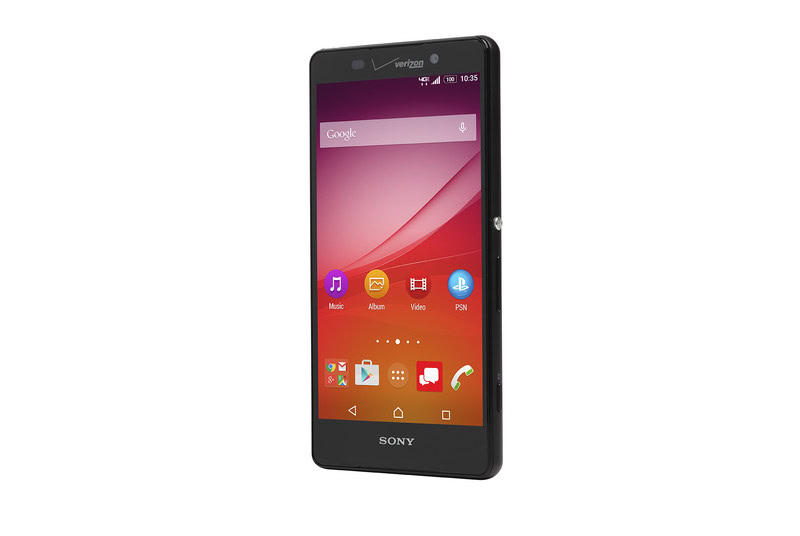
Once upon a time, Sony could do no wrong. It had a venerable army of top-notch tech ranging from Walkmans, VAIO computers, the Playstation, Bravia televisions, AIBO… the list goes on and on. Lesser companies would be happy to have just a couple of successful products. For many of us who like tech, myself included, Sony was the epitome of the industry. A bastion of inventiveness, innovation, and creativity. It was also consistently in the black, and revered the world over.
Fast forward to 2015, and the Sony that exists today is of a rather different nature. VAIO has been sold off, the OLED division sold to JDS, some PMP Walkmans are now retailing for over $1000, the company is still trying to stay out of the red, and has diversified into insurance sales and banking (here in Japan, at least).
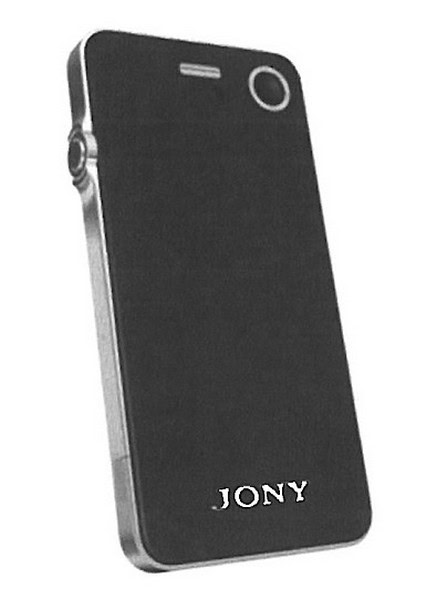
Sony has also just released the Xperia Z4 (Z3+ in global markets), amid much outcry among the fans who felt betrayed: the design and specs were almost an exact clone of that which released last fall, the Z3.
Perhaps the biggest issue was the inclusion of a standard, Full HD display amid a sea of OEMs who are opting for QHD panels, domestic rivals Sharp and Fujitsu included. Jonathan Lin, General Manager of Sony Mobile Taiwan, even went on record to openly proclaim that, “At the moment, making the move to 2K technology on 5- to 5.5-inch screens does not seem able to achieve market segmentation, so we have no plans to launch 2K phones… [we won’t do so until there are] significant improvements in display quality and digital image processing technology.”
A confusing turn of events
Curious then, how the just announced Xperia Z4v throws everything into contention. It’s a smartphone that has significant changes, not the least of which is, in fact, a QHD display, along with wireless charging, and a slightly larger battery. (It’s also slightly thicker and heavier, yes).
The Verizon-exclusive is everything that the standard Z4 should be, yet it’s not.
It’s also a product designed for a country where Sony has an extremely small market share, rather than the only one where it has a major stake: Japan.
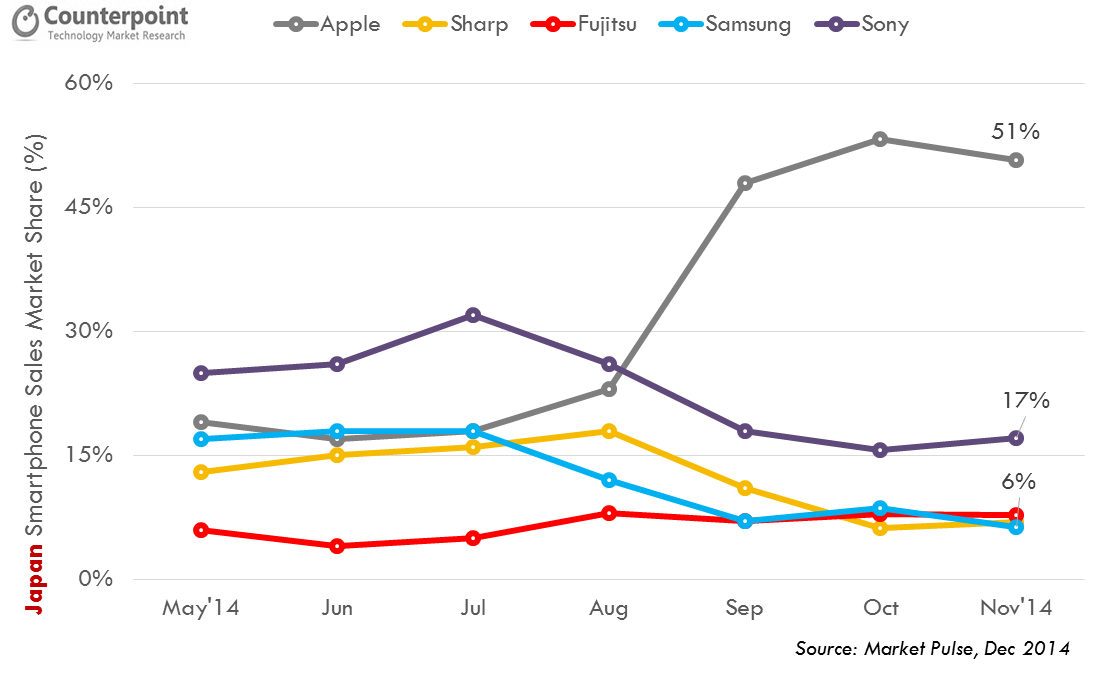
This graph, from December of last year, offers several important metrics with respect to Sony in Japan: (1) it has the largest market share of all Android OEMs, (2) the market share peaked in July when new handsets released and then dropped, and (3) it began to recover slightly in October.
Japan is the only country where mainstream consumers actively seek to buy Xperia phones, and actively seek to avoid Samsung (the S6 and S6 Edge reportedly failed to impress the Japanese). Perhaps even more importantly, Japan’s market also has the likes of Fujitsu and Sharp. The former already has smartphones with QHD displays, as well as iris-scanning technology, while Sharp has showcased QHD display panels and will probably follow with smartphones incorporating them soon.
A bit of background
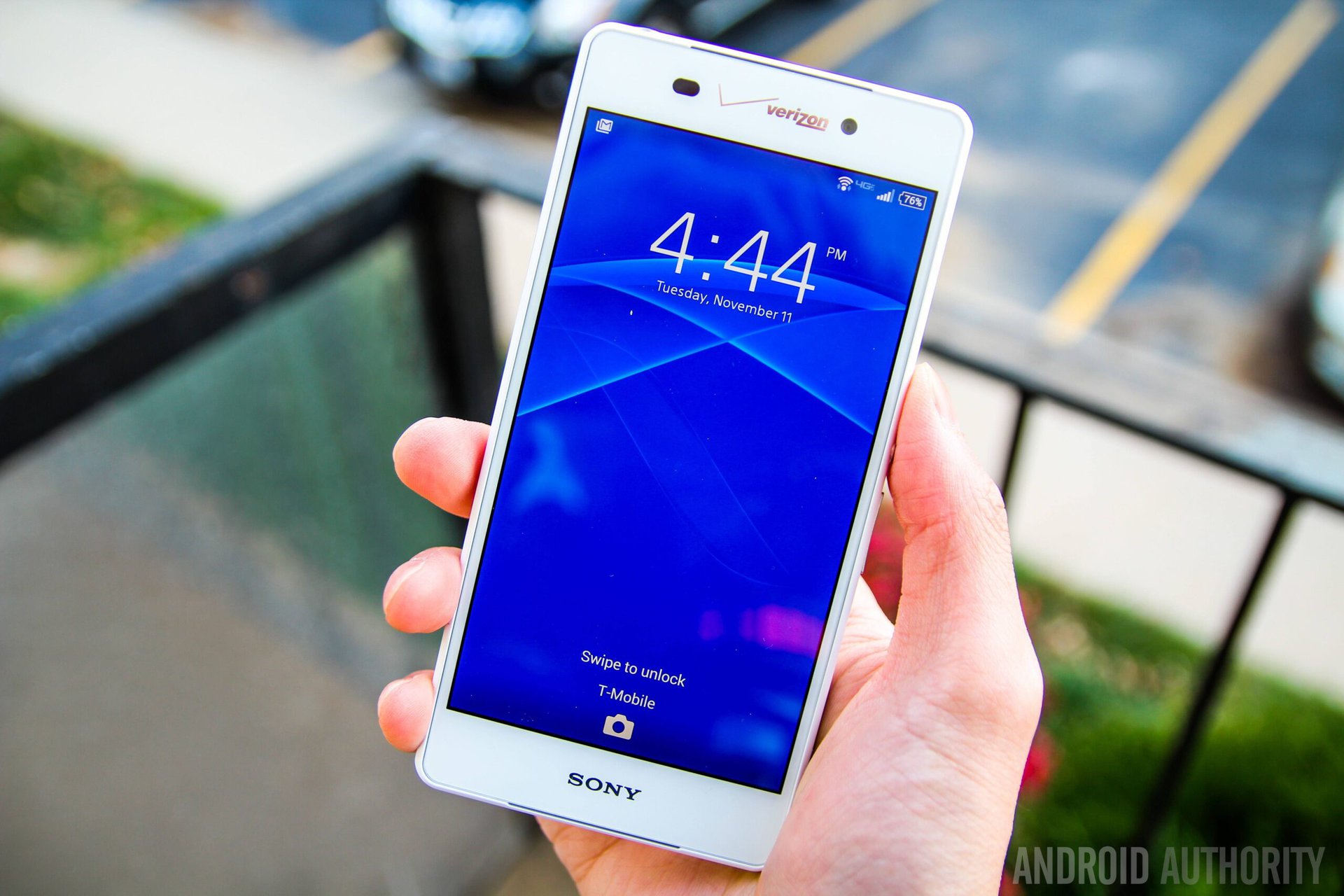
Before continuing, let’s just establish that in many cases, carriers dictate what and when things happen when it comes to OEMs. Look no further than last year’s Xperia Z3v to understand just how much influence Verizon had on the appearance of the device, which some were quick to accuse made it a visual clone of the Z2 that came before it. (The global Z3 had some design changes). Given that Sony is releasing the Xperia Z4 internationally as the Z3+, one might argue that only Big Red was able to (or perhaps interested in) making changes.
The reason for this could be any of a multitude of possibilities, though it’s possible Verizon sought to negotiate with Sony to bring a device that would feature truly cutting-edge specs on par with rival phones, as well as craft a device that is superior to those from rival carriers. This may – or may not – have involved guarantees, financial compensation, stipulations, or various other arrangements.
At the very least, it’s clear that Verizon, more so than any of the other carriers, seems to have considerable sway in having Sony see its way, curiously even more so than among any of the Japanese carriers (though again, we can only speculate as to why Japan’s largest provider, NTT docomo, didn’t make similar demands).
A question of logic
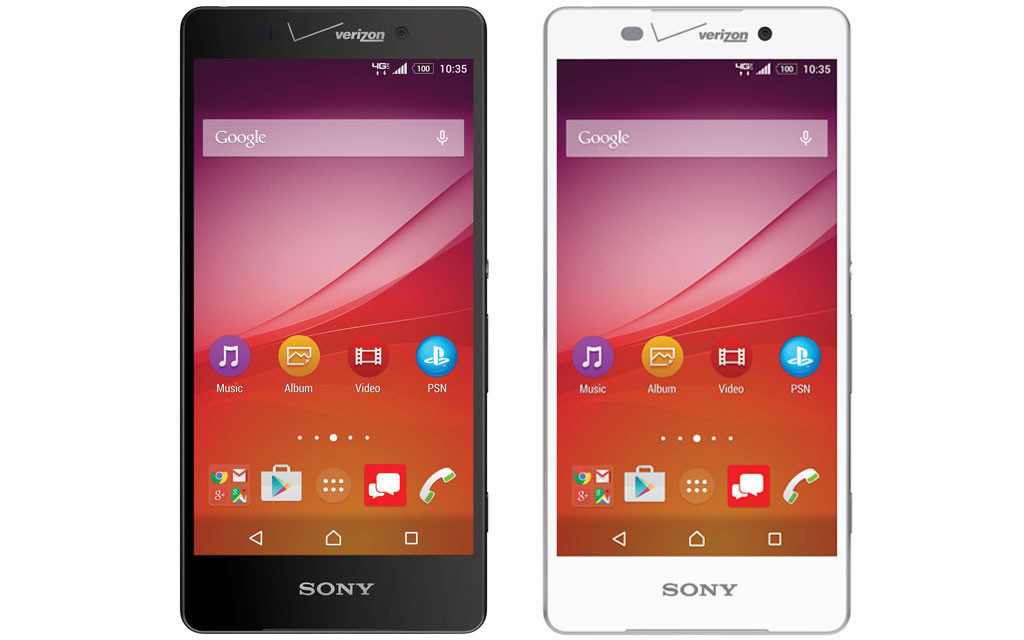
This entire situation is a confounding one at best, and one that doesn’t seem at all logical. There are three main points of contention here:
1. Sony is snubbing its home market. We have already established that the Xperia brand has the largest Android market share in Japan, and with more and more OEMs releasing products of increasingly impressive specs, Sony really needs to bring its “A” game if it wants to remain Android’s top dog. If any country deserved to have a QHD product, it’s Japan.
2. Sony is angering many of its core fanbase. When the Xperia Z4 was first announced, the outcry of outrage was quite obvious. One of our own staff members scribed a piece calling out Sony for its ways (though another piece was presented to postulate the predicament). The design was lamented, as was the retention of the same screen and camera module seen in the Z3 that had released some months earlier. Even the most die-hard fan can only take so much similarity, and in pulling an “HTC M9” Sony inevitably burned a few bridges. Having a product like this, with a QHD display, would have definitely made the Z4 less of a contentions topic.
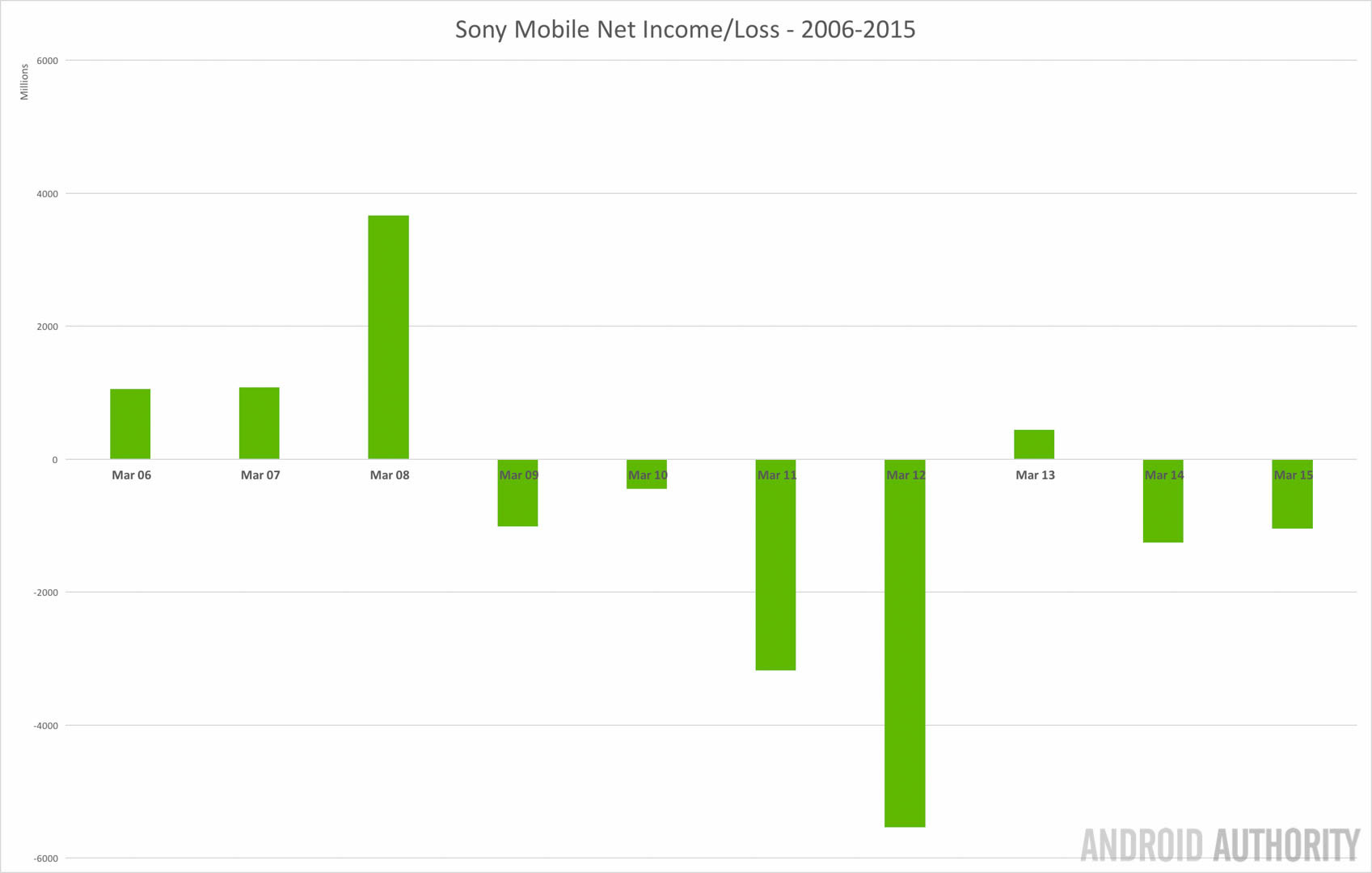
3. Sony is backtracking on the divisive, clear-cut statements it has been offering. Granted we’ve already seen how the company’s global PR team has some consistency issues to work out earlier this year. But when the General Manager of an entire country’s business operations goes on record issuing comments about use of QHD technology in smartphones, there is a major problem when just weeks later, those words are proverbially eaten. If I were a shareholder of Sony stock, I’d sure as heck be ticked off from the misleading remarks out of Taiwan (and then, of course, from the failure to implement the Z4v changes to the Z4/Z3+ model).
“We have no plans to launch 2K phones {without} significant improvements in display quality and digital image processing technology” - Jonathan Lin, GM of Sony Taiwan, May 27, 2015
A look at the future
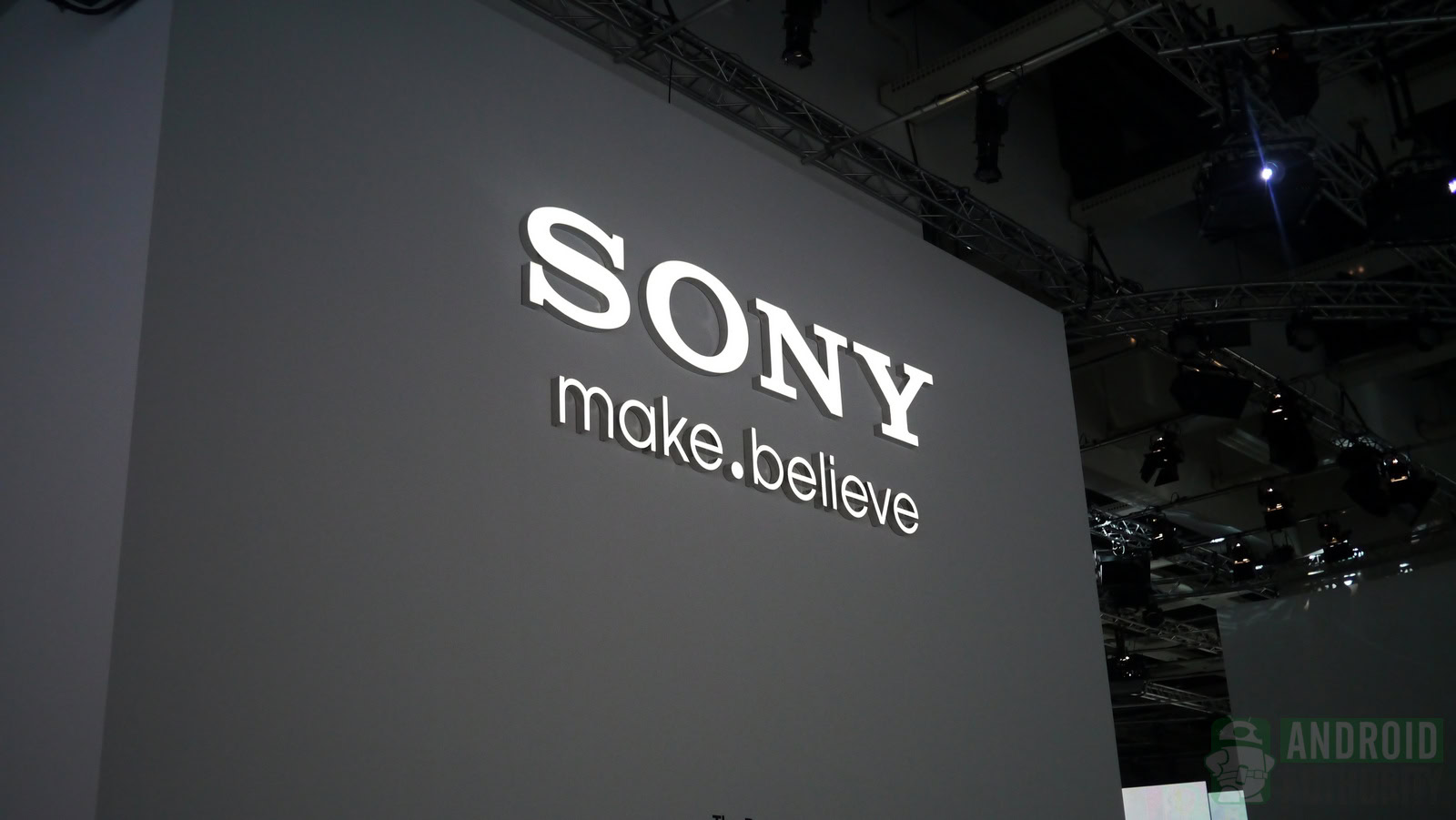
The future of Sony Mobile’s smartphone products is truly up-in-the-air it would seem, at least with respect to specs. Now that a QHD device has been produced, it would seem clear that the next Xperia, the Z5, will make use of such a display. This would, in theory, at least give it a cause for legitimacy should Sony opt not to update many of the internal components. Then again, there seems to be clear consistency issues in terms of what the company says, and what it does. This is, of course, all among the overall backdrop of controlled crisis as problems continue to mount.
One thing is clear as crystal however: Sony Mobile needs to get its act together, and do so immediately. It needs comprehensive, cohesive leadership that can put out a top-notch product on a global scale, and do everything in its power to retain the core market segment is currently has in Japan. People can forgive and forget, but even the most promising set of patience won’t last forever.